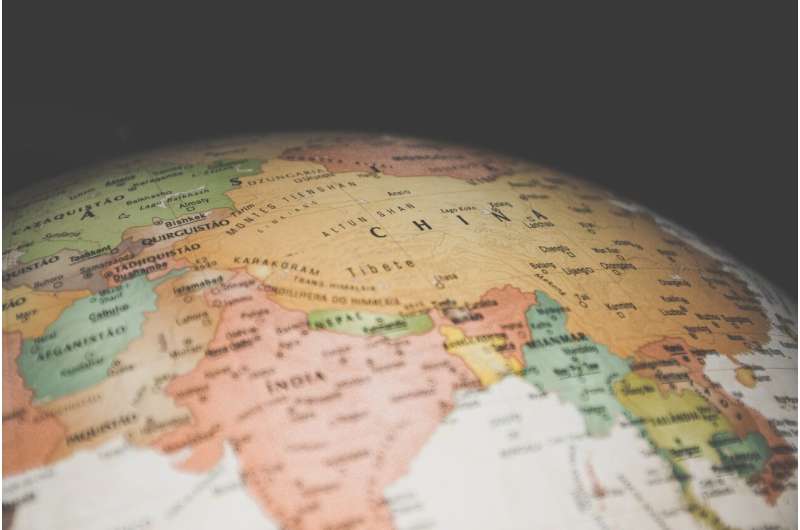Mapping the reception of latitude and longitude in early modern China

The mid-eighteenth century marked the conclusion of a significant period of expansion for the Qing empire (1644-1911). The empire controlled nearly twice as much land as before, and updated maps were needed to record and represent new territorial acquisitions.
These cartographical endeavors provided an opportunity to become acquainted with new scientific technology. The Manchu emperors enlisted the mapmaking expertise of the Jesuits, who employed innovative latitude and longitude coordinates to generate atlases. But the coordinate system was not accepted uniformly throughout the empire, leading to clashing interpretations over time.
In the article "The Plurality of Reception: Latitude and Longitude in Early Modern China, 1700-1900," published in Isis, Xue Zhang argues that the overall transmission of the latitude-longitude system was inconsistent—and acceptance of the system sporadic—across the different social strata of the Qing empire. Zhang examines myriad maps to analyze the factors behind this phenomenon, ultimately demonstrating that the successful transmission of technological advances within a society depends as strongly on prevailing social attitudes as scientific ones.
While usage of latitude and longitude coordinates was gaining popularity in Europe, nonscale maps remained prevalent in both Europe and China. Nonscale maps of the period, some of which incorporated a square grid, illustrated relative distances. Providing an approximation of an area or estimated travel time between locations, these maps served the majority of users' needs. Chinese cartographers were therefore hesitant to alter their methods.
Zhang notes that the Manchu emperors, however, valued the updated maps based on latitude-longitude coordinates. The new atlases were well received and regularly referenced by members of the imperial court for military matters or issues of diplomacy. But given the strategic value of the materials, the maps were not widely shared outside of the palace.
Another factor that hindered reception was the existence of two competing cosmological theories: the theory of Heavenly Cover and the spherical Earth theory. The principal cosmological theory at the time, the theory of Heavenly Cover posited that heaven exists as a dome above the flat plane of Earth. In contrast, latitude and longitude coordinates rely upon the notion that Earth is a sphere. Emperors' comprehension of different cosmological views and their acceptance of the spherical Earth theory greatly impacted how others using the imperial maps interpreted and reproduced the latitude-longitude information.
Debates concerning cosmological theories and how meridians should appear persisted throughout the nineteenth century as access to imperial maps expanded to scholars. Despite the greater access, relative approximations were still favored, and latitude-longitude coordinates, when included, were rarely explained. Instead, the presence of coordinates frequently served as a signifier of a connection to the imperial court.
Thus, different social groups approached the latitude-longitude system in unique ways, adopting aspects of the system that suited their particular needs and worldviews. The result was a reenvisioned coordinate system with new implications. As Zhang emphasizes, "From this vantage point, technology reception is indeed a plural process." To understand a technology, in other words, one must also understand the cultural and social context that has enabled its acceptance and use.
More information: Xue Zhang, The Plurality of Reception: Latitude and Longitude in Early Modern China, 1700–1900, Isis (2022). DOI: 10.1086/721142
Provided by University of Chicago





















